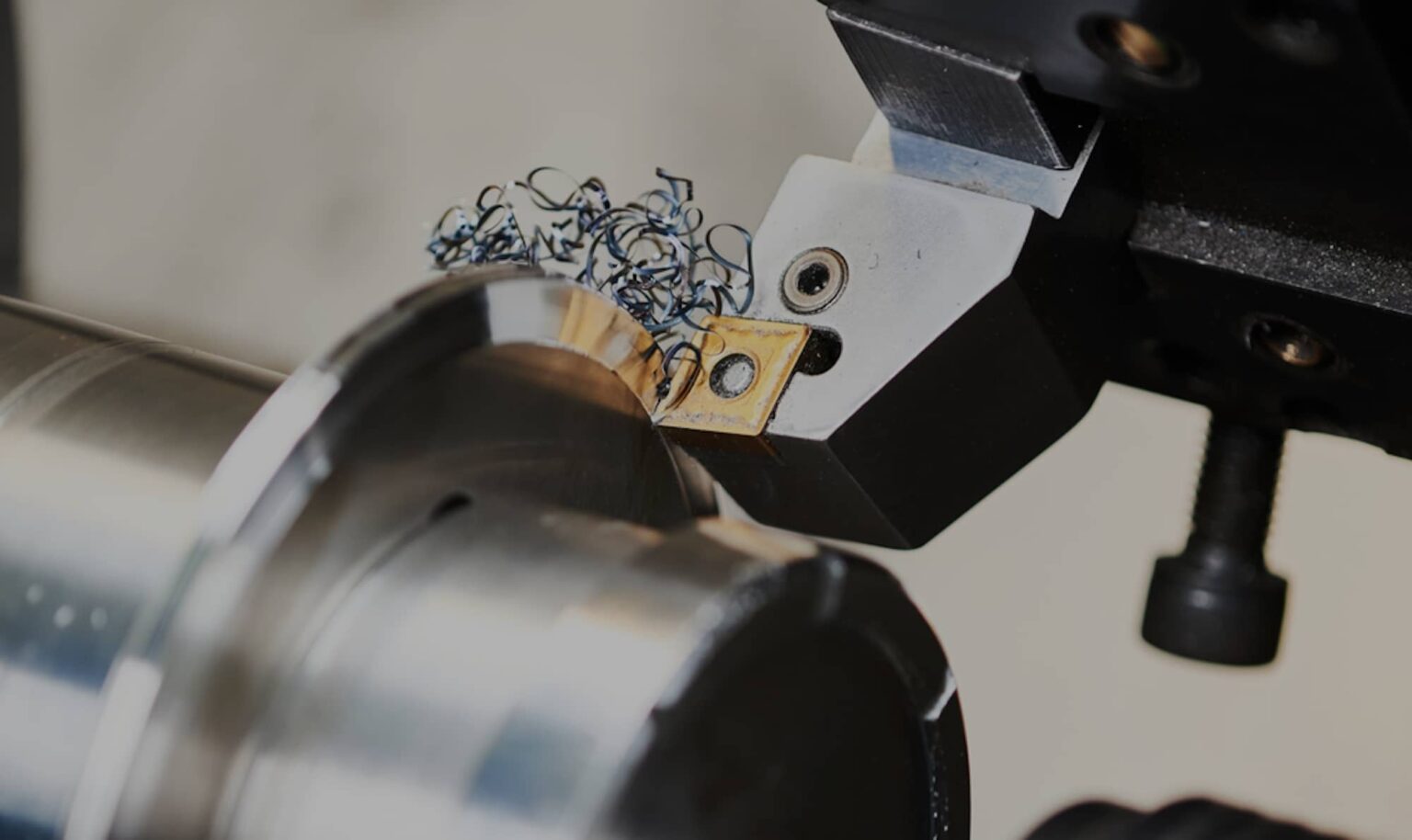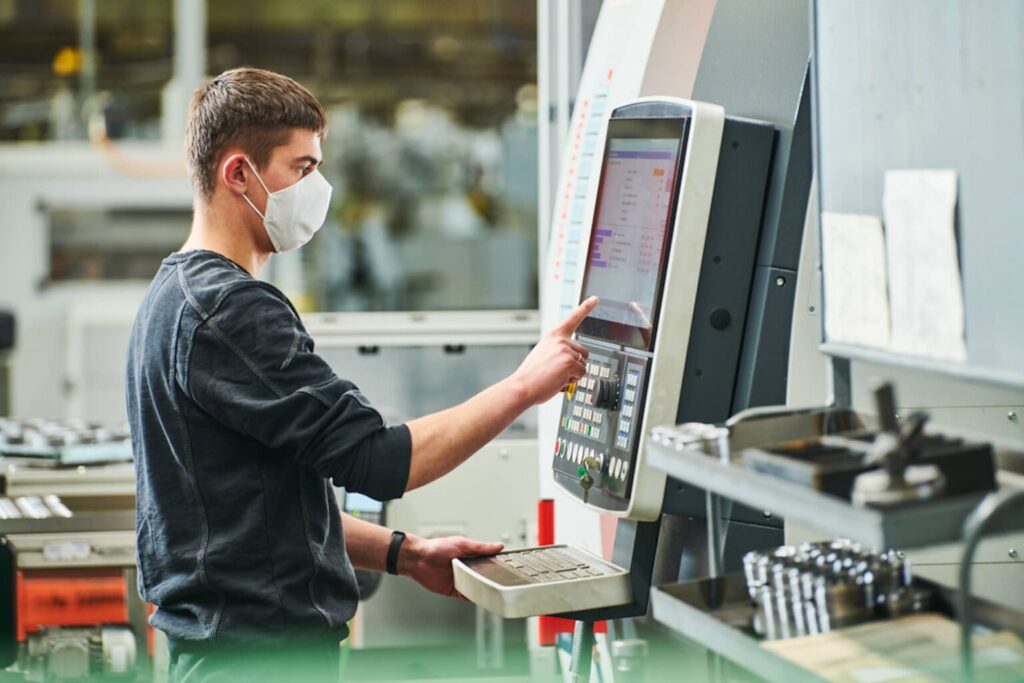

Originally published on fastradius.com on CNC Machining
Computer Numerical Control (CNC) machining is a traditional manufacturing method that creates parts by removing material from a solid block, known as the workpiece or blank.
However, the term “CNC machining” can actually refer to a number of processes, each of which uses different tools and machines to shape the desired part. CNC milling, for example, uses rotary cutters and perpendicular motion to remove material from the face of the workpiece, while CNC drilling allows engineers to create holes and shapes into the blank with precise diameters and lengths.
Many CNC manufacturing processes involve applying spinning cutting tools to a fixed workpiece, but CNC turning is a machining method that works the other way around. By rotating the blank rather than the tool, this process enables the efficient production of a wide variety of cylindrical or oblong parts. Here’s what engineers and product teams need to keep in mind.
Generally, CNC turning produces parts by moving a cutting tool along the external surface of a rapidly spinning workpiece. This process creates a helical toolpath and results in highly axisymmetric parts. When applied to a blank’s internal surfaces, this same cutting action is known as “boring” — together, turning and boring comprise the larger subset of CNC processes known as CNC lathing.


While some of the smaller details vary by model and manufacturer, most CNC turning machines contain a similar set of parts. The ones most relevant to production include:
During production, the workpiece is inserted into the chuck, the spindle begins to rotate, and the cutting tools are applied to the piece’s surface to shape the part geometry.
Workpieces used in CNC turning are typically long and cylindrical, but may be square or hexagonal depending on part design. Hex brass ball valves, for instance, begin as hexagonal bars and are lathed on either side of the nut to create threads.
Whereas conventional lathe machines typically only allow for tooling along two axes (turning centers, however, will likely have some Y-axis capabilities), CNC turning machines allow for cutting operations to occur along three, four, or five axes. A few of these additional operations include:
CNC turning is generally well suited for prototyping and low-volume production. However, when determining whether CNC lathe turning is the most cost-effective method of producing a part, one factor that needs to be taken into consideration is the outer diameter (OD) of the piece. This is because CNC turning machines have a maximum OD for bar-feed capable part production, and any part with an OD over the set limit will need to be chucked individually, which can drive up both production time and costs.
Another element to keep in mind is the CNC tools themselves. Many of these are cylindrically shaped with a limited cutting edge, which inherently determines how cuts can be made to the workpiece. This also means that design elements like internal corners will have a radius, regardless of how fine or small the size of the cutting tool. CNC turning is well suited for creating undercuts (also known as neck or relief grooves). These are common on cylindrical turned parts and would be very cumbersome to manufacture on a CNC milling machine. If specialized cutting tools are called for, it’s important to remember that these present their own set of challenges. For instance, tools with longer shafts — which are useful for reaching deeper parts of workpiece cavities — increase the risk of vibration, less-accurate cuts, and poor surface finish.
While CNC turning offers unparalleled efficiency for producing parts with revolved profiles — such as bolts, ball bearings, and washers — it is not optimal for creating non-axisymmetrical pieces.
CNC milling — commonly used for automotive, aerospace, and furniture manufacturing applications, as well as in the production of robots and industrial-grade machinery — can also be used in tandem with CNC turning to add design features, such as flat faces, that are impossible to achieve otherwise.
In order to take full advantage of the benefits of CNC turning, product teams and engineers must familiarize themselves with a number of critical design and manufacturing considerations, including the part’s OD and the production run volume.
Partnering with an on-demand digital manufacturer like SyBridge can be the ticket to faster, more effective design and production. Our team of experts not only help to optimize part design for CNC turning, milling, or whatever combination of manufacturing processes is most efficient and cost-effective for a particular project — we also help to streamline supply chains and reduce operational risk for our customers. Contact us today to discover how we’re redefining what’s possible with modern manufacturing.
Forget typical cycle times. We're pushing the boundaries of conformal cooling. While traditional approaches deliver…
Forget typical cycle times. We're pushing the boundaries of conformal cooling. While traditional approaches deliver…
From left to right: Brayden Janak (apprentice); Logan Vifaquain (CNC machining, Programming and CMM); Ron…
SyBridge Technologies is proud to announce we have been awarded the 2023 General Motors Supplier…
Today, designers and engineers are accustomed to working with digital tools in their day-to-day jobs.…
Optimizing Your Injection Molding Process for Cost-Effective Manufacturing Excellence In today’s competitive landscape, manufacturers are…